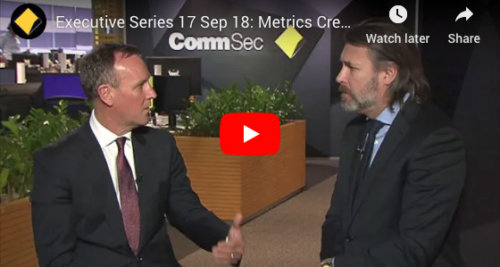Why corporate loans can help your portfolio – Livewire column

June 18, 2019 – (Livewire exclusive)
Mandatory retirement savings in Australia are worth $2.7 trillion and growing. Equity markets are arguably looking fully priced, particularly as the rhetoric of a trade war between the US and China ramps up again. To top it off, bank deposits and bond yields are offering circa 2% yields at best.
Finding investment opportunities that are diversified away from the traditional asset classes of equities and bonds is difficult and explains the explosion in demand for alternative assets such as private debt or corporate loans.
Corporate loans broadly refer to loans made to businesses of scale (ie. not SMEs) for a specific business purpose (eg. working capital, capital expenditure, acquisitions etc). Returns are generated from interest, which is generally charged at a floating rate with an additional margin above the bank bill swap rate.
Corporate loans are categorised as a defensive investment in the context of capital and the credit risk spectrum because they are structured with embedded protective mechanisms, such as:
- Access to private information not to available to public markets
- Ongoing financial reporting from borrowers with covenants for the lender enabling them to proactively protect their exposure
- Rank in priority to equity during insolvency events
- Lending is usually secured, often by physical assets
The Australian corporate loan market is approximately $963 billion, accounting for 81% of the Australian corporate debt market (as at December 2018, ABS statistics).
It is over 20x the size of the $43 billion domestic corporate bond market.
Metrics Credit Partners is now one of the country’s largest non-bank corporate lenders, having lent close to $6 billion to corporates since its first fund in 2013.
Generating income from corporate loans
Investors have historically had very limited ability to access the corporate loan market because it has been dominated by the banks, with the major domestics accounting for 71% of onshore corporate lending (source: APRA Monthly Banking Statistics September 2018).
In order to access the market, you need to have significant scale and established networks with borrowers and other market participants.

(Source: ABS Australian National Accounts Finance and Wealth September 2018)
Metrics was the first fund manager in Australia to float a listed investment trust (LIT) on the ASX that gives investors access to the domestic corporate loan market, via the MCP Master Income Trust (ASX:MXT).
For those that can access this highly specialised market, one of the key attractions of the asset class is the low volatility. This is based on ranking senior in a borrower’s capital structure, low loss rates, floating rates, and the fact that they are not publicly traded instruments and are typically held by the banks.

We could distil the benefits of including an allocation to corporate loans within a portfolio into three key points:
- They have low correlation to equities and bonds.
- Corporate loans offer protection against inflation because they use floating rates.
- In a listed structure they can provide a stable source of income and liquidity.
Metrics’ approach
Corporate loans are not an asset class that investors can access directly, and therefore need to be accessed via a manager with scale and expertise in this market.
Metrics lends on a standalone basis or as part of a syndicate of lenders alongside banks. Many corporate loan transactions are on an invite-only basis. Referrals often come from other lenders building syndicates, or advisers, or via a direct network of relationships established with corporate borrowers.
Investing in the corporate loan market requires a very specialised set of skills, such as:
- Credit assessment skills
- Experience analysing corporate strategy
- Understanding cashflow drivers
- Structuring transactions to include downside protections
- The ability to price risk appropriately
Taking all of these factors into account, Metrics understands that investors have different risk/return/liquidity profiles. Metrics has eight different wholesale funds in addition to the ASX-listed MCP Master Income Trust (ASX:MXT) and MCP Income Opportunities Trust (ASX:MOT).
At one end is MXT, which aims to deliver stable monthly income of the RBA cash rate plus 3.25% (currently 4.50% p.a. net of fees).
MXT was the first LIT in Australia with a clear mandate to invest in direct corporate loans. MXT has consistently delivered returns in excess of this minimum target since listing in October 2017, with monthly income distributions contributing to a 5.58% p.a. net return since inception to April 2019.
To support the premise of low capital volatility, since inception to April 2019 MXT has maintained a stable net asset value (NAV) with the unit price consistently trading at or above the daily NAV.
NAV/UNIT AND UNIT PRICE PERFORMANCE

(NOTE: First distribution end December 2017 and month thereafter. Entitlement Offer announced 26 February 2018 and closed 27 March 2018. Entitlement Offer announced on 16 April 2019.)
At the other end of spectrum is the recently listed MOT. MOT also invests in corporate loans but has a further mandate to invest in instruments that may provide investors with an equity like return, such as warrants, options or shares.
MOT targets a quarterly cash return of 7% p.a. with a total target return of 8% p.a. to 10% p.a., in each case net of fees and expenses.
Rules of investing in corporate loans
We have rigorous processes in place to originate and manage the risks associated with direct lending.
We assess every asset on its merits, using a bottom up approach. We conduct comprehensive due diligence covering quantitative assessments of financials and ratios, combined with qualitative assessments of management, industry and corporate strategy. We then manage this risk via appropriate controls, covenants and security.
Because everything is conducted on a case by case basis, loans can be structured to give the greatest possible lender protections to drive successful outcomes for investors.
Where are the best opportunities?
Investment-grade Australian corporates are continually looking to refinance as existing loans approach maturity and corporate actions often also trigger financing opportunities.
The domestic banks are under scrutiny in the aftermath of the Financial Services Royal Commission. Any pull back from them based on scrutiny, as opposed to the underlying fundamentals of individual borrowers, may provide opportunities for lenders.
We are active in lending to private equity sponsors and anticipate that there will continue to be high transaction volumes and lending opportunities in the near term. Warren Buffett recently highlighted that PE funds worldwide may be sitting on a war chest of about $US1 trillion to spend – a figure that could grow to $US3 trillion with leverage.
What are we avoiding
We try not to rule out any opportunity until we have done a detailed fundamental analysis of the transaction. In our view, investors are best served by Metrics completing an assessment of every transaction on its merits even though we may not lend or complete transactions with all borrowers.
For example, pricing is currently tight for investment grade companies as many lenders are competing for their business. We want that business too, but the risk reward ratio needs to stack up and we will assess other opportunities available to deploy our investors’ funds.
Pitfalls of corporate loans
Corporate loans are less liquid than publicly traded investments. They are not generally bought or sold and usually lenders lend on a hold-to-maturity basis, reflecting the fundamental credit risk of the loan transaction.
Managers with smaller portfolios or weaker networks may not be able to generate a pipeline of high-quality transactions. Inexperienced managers can fail to appropriately structure loans to mitigate the key risks which are intended to protect the lender from capital losses. They can also fail to appropriately price the risk of an individual transaction and leave returns on the table.
Fundamental credit analysis, strong relationships, loan structuring skills and the ability to manage a loan portfolio (including any underperforming assets) are all required to mitigate downside risks and generate returns from corporate loans. Metrics’ experienced investment team has a strong track record of avoiding these pitfalls and delivering above target returns for investors.
Our long-term return expectations
We have continued to grow our total AUM (>$4.0 billion) and the market cap of MXT. This should enhance net returns to investors by reducing proportional costs. Increased scale also makes Metrics a more appealing lender to borrowers, which should drive its own share of transaction flow.
Diversification is an important aspect of limiting downside risks to investors. MXT has exposure to over 100 individual borrowers and we anticipate this number to continue to grow as we raise further capital for MXT and underlying wholesale funds.
Our team has the experience and specialist skills required to generate strong performance, demonstrated by the track record of MXT.
We intend to focus on enhancing scale, diversification, and lower investment costs, while using the experience of our management team to continue to drive outperformance for all of Metrics’ funds.
Other News
Research Paper: Six Trends for Private Credit in 2026
Metrics Credit Partners has released its latest research paper, Six Trends for Private Credit in 2026, exploring the opportunities and challenges…
Metrics Innovate Reconciliation Action Plan
We are proud to share our second Reconciliation Action Plan (RAP), reaffirming our commitment to truth, healing and unity. We…
INSIGHTS
MCP Income Opportunities Trust (MOT) lists on ASX
Sydney, 29 April 2019: The Trust Company (RE Services) Limited (ABN 45 003 278 831) (Responsible Entity) is the responsible…
MCP Master Income Trust wins Lonsec Listed Fund Award
The award came a year after MXT was listed on the Australian Securities Exchange






